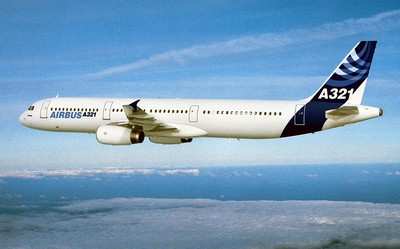Mon, May 07, 2018
System Limits Available Oxygen In Fuel Tanks To Comply With Fuel Tank Flammability Reduction Rule
The FAA has issued a STC to AerSale for installation of its AerSafe system on Airbus A321 aircraft (ST04010NY) in compliance with the Fuel Tank Flammability Reduction (FTFR) rule. EASA has also approved AerSafe on A321 aircraft (10065226) as a Flammability Reduction System (FRS).

This new STC is in addition to AerSale’s STCs for the Boeing 767 series (ST03599NY), approved by the FAA in February 2018, as well as the Boeing 737 CL series (ST03589NY) and the Boeing 737 NG series (ST02980NY), both approved in 2016.
“Obtaining approval from both the FAA and EASA shows AerSafe should be a key consideration for complying with the FTFR rule,” said Iso Nezaj, Chief Technical Officer at AerSale. “With AerSafe’s substantial cost savings and additional maintenance-friendly benefits, nitrogen inerting systems simply cannot compare. AerSafe is available in less than six weeks, installs in two days, has no mechanical parts to fail, and once installed, is maintenance-free. Airlines and operators faced with retrofitting a single aircraft or an entire fleet will realize significant benefits."
Tested and developed to exact tolerances to fill the cavity of the A321 center fuel tanks, AerSafe limits the amount of available oxygen that can ignite fuel vapors and prevents sparks from igniting an explosion. AerSafe comes as a complete prefabricated kit that can be installed at any hangar around the world. After initial installation, the system requires no maintenance or spare parts. A limited number of AerSafe kits are currently available for immediate installation. For larger orders, the lead time for ordering AerSafe is currently 60 days versus the one-year lead time for the nitrogen inerting system.
The FAA enacted the FTFR rule after the crash of TWA flight 800 off the coast of New York. Federal investigations revealed that the accident was the result of an explosion caused by a spark igniting fumes in the center fuel tank of the Boeing 747. The FTFR rule requires fuel tank ignition sources and flammability exposure to be reduced in aircraft most at risk. The FAA gave two options: a flammability reduction means such as nitrogen inerting, or an ignition mitigation means such as AerSafe. These systems must be installed on all passenger aircraft that have high flammability fuel tanks and fly within or into the United States.
(Source: AerSale news release. Image from file)
More News
He Attempted To Restart The Engine Three Times. On The Third Restart Attempt, He Noticed That Flames Were Coming Out From The Right Wing Near The Fuel Cap Analysis: The pilot repor>[...]
Make Sure You NEVER Miss A New Story From Aero-News Network Do you ever feel like you never see posts from a certain person or page on Facebook or Instagram? Here’s how you c>[...]
From 2009 (YouTube Edition): Leading Air Show Performers Give Their Best Advice for Newcomers On December 6th through December 9th, the Paris Las Vegas Hotel hosted over 1,500 air >[...]
Aero Linx: NASA ASRS ASRS captures confidential reports, analyzes the resulting aviation safety data, and disseminates vital information to the aviation community. The ASRS is an i>[...]
“For our inaugural Pylon Racing Seminar in Roswell, we were thrilled to certify 60 pilots across our six closed-course pylon race classes. Not only did this year’s PRS >[...]
 NTSB Final Report: Rutan Long-EZ
NTSB Final Report: Rutan Long-EZ ANN FAQ: Turn On Post Notifications
ANN FAQ: Turn On Post Notifications Classic Aero-TV: ICAS Perspectives - Advice for New Air Show Performers
Classic Aero-TV: ICAS Perspectives - Advice for New Air Show Performers ANN's Daily Aero-Linx (06.28.25)
ANN's Daily Aero-Linx (06.28.25) Aero-News: Quote of the Day (06.28.25)
Aero-News: Quote of the Day (06.28.25)



